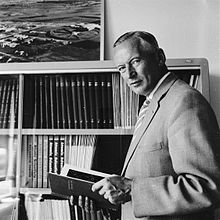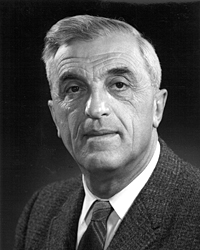
Felix Bloch was a Swiss-American physicist and Nobel physics laureate who worked mainly in the U.S. He and Edward Mills Purcell were awarded the 1952 Nobel Prize for Physics for "their development of new ways and methods for nuclear magnetic precision measurements." In 1954–1955, he served for one year as the first director-general of CERN. Felix Bloch made fundamental theoretical contributions to the understanding of ferromagnetism and electron behavior in crystal lattices. He is also considered one of the developers of nuclear magnetic resonance.
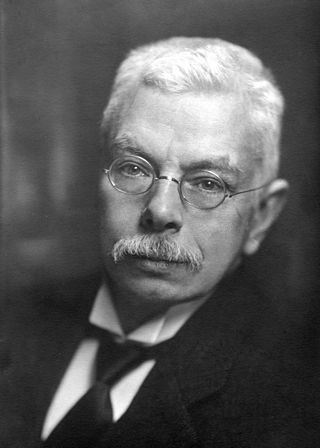
Pieter Zeeman was a Dutch physicist who shared the 1902 Nobel Prize in Physics with Hendrik Lorentz for his discovery of the Zeeman effect.

The National Superconducting Cyclotron Laboratory (NSCL), located on the campus of Michigan State University was a rare isotope research facility in the United States. Established in 1963, the cyclotron laboratory has been succeeded by the Facility for Rare Isotope Beams, a linear accelerator providing beam to the same detector halls.
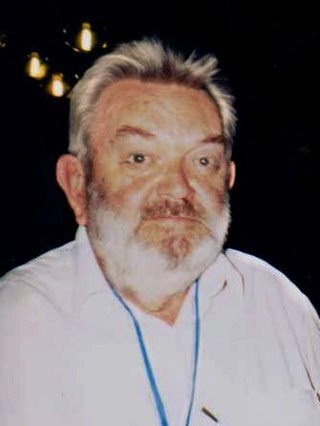
Martinus Justinus Godefriedus "Tini" Veltman was a Dutch theoretical physicist. He shared the 1999 Nobel Prize in physics with his former PhD student Gerardus 't Hooft for their work on particle theory.

A synchrocyclotron is a special type of cyclotron, patented by Edwin McMillan in 1952, in which the frequency of the driving RF electric field is varied to compensate for relativistic effects as the particles' velocity begins to approach the speed of light. This is in contrast to the classical cyclotron, where this frequency is constant.

Robertus Henricus "Robbert" Dijkgraaf, is a Dutch theoretical physicist, mathematician and string theorist, and the Minister of Education, Culture and Science in the Netherlands from 2022 until 2024. From July 2012 until his inauguration as a minister, he had been the director and Leon Levy professor at the Institute for Advanced Study in Princeton, New Jersey, and a tenured professor at the University of Amsterdam.

Paul Hermann Scherrer was a Swiss physicist. Born in St. Gallen, Switzerland, he studied at Göttingen, Germany, before becoming a lecturer there. Later, Scherrer became head of the Department of Physics at ETH Zurich.

The Joint Institute for Nuclear Research, in Dubna, Moscow Oblast, Russia, is an international research center for nuclear sciences, with 5,500 staff members including 1,200 researchers holding over 1,000 Ph.Ds from eighteen countries. Most scientists are scientists of the Russian Federation.

Edoardo Amaldi was an Italian physicist. He coined the term "neutrino" in conversations with Enrico Fermi distinguishing it from the heavier "neutron". He has been described as "one of the leading nuclear physicists of the twentieth century." He was involved in the anti-nuclear peace movement.

Léon Charles Prudent Van Hove was a Belgian physicist and a Director General of CERN. He developed a scientific career spanning mathematics, solid state physics, elementary particle and nuclear physics to cosmology.

Herwig Franz Schopper is a German experimental physicist. He was the director general of CERN from 1981 to 1988.
Wolfgang Gentner was a German experimental nuclear physicist.
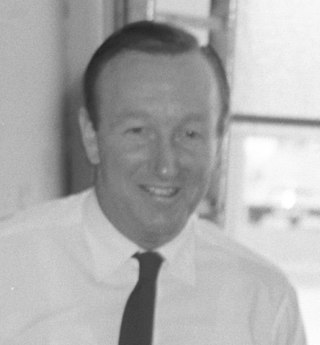
Francis James Macdonald Farley FRS was a British scientist. He was elected Fellow of the Royal Society on 16 March 1972 earning the designation FRS. He was also a Fellow of the Institute of Physics and an honorary fellow of Trinity College Dublin. He was educated at Clifton College and at Clare College, Cambridge. Farley obtained his PhD from Cambridge in 1950.

Bikash Sinha was an Indian physicist who was active in the fields of nuclear physics and high energy physics. Sinha was the director of the Saha Institute of Nuclear Physics and Variable Energy Cyclotron Centre and the chairman of the Board of Governors of the National Institute of Technology, Durgapur in June 2005. He was also a member of scientific advisory board to the Prime Minister of India.

Herbert Wakefield Banks Skinner was a British physicist.

Peter Jenni, is an experimental particle physicist working at CERN. He is best known as one of the "founding fathers" of the ATLAS experiment at the CERN Large Hadron Collider together with a few other colleagues. He acted as spokesperson of the ATLAS Collaboration until 2009. ATLAS is a world-wide collaboration which started in 1992 involving roughly 3,000 physicists at 183 institutions in 38 countries. Jenni was directly involved in the experimental work leading to the discoveries of the W and Z bosons in the 1980s and the Higgs boson in 2012. He is (co-)author of about 1000 publications in scientific journals.
The Synchro-Cyclotron, or Synchrocyclotron (SC), built in 1957, was CERN’s first accelerator. It was in circumference and provided for CERN's first experiments in particle and nuclear physics. It accelerated particles to energies up to 600 MeV. The foundation stone of CERN was laid at the site of the Synchrocyclotron by the first Director-General of CERN, Felix Bloch. After its remarkably long 33 years of service time, the SC was decommissioned in 1990. Nowadays it accepts visitors as an exhibition area in CERN.
Marcello Conversi was an Italian particle physicist. He is best known for his 1946 cosmic ray experiment where he showed that the "mesotron", now known as the muon, was not a strongly interacting particle.
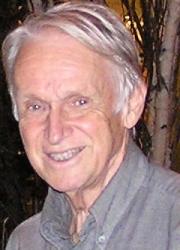
Torleif Erik Oskar Ericson is a Swedish nuclear theoretical physicist. He is known for 'Ericson fluctuations' and the 'Ericson-Ericson Lorentz-Lorenz effect'. His research has nurtured the link between nuclear and particle physics.
Adriaan van der Woude was a Dutch nuclear physicist, known as a leading expert on giant resonances.
